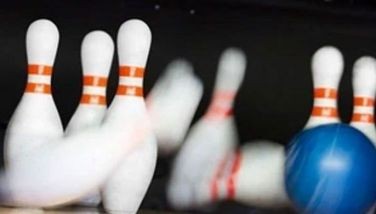BFAR exec sees hope for RP shrimp industry
October 20, 2005 | 12:00am
DAGUPAN CITY — There is hope in reviving the county’s gasping shrimp industry.
This, as the second batch of broodstock of the once controversial vannamei (Pacific white shrimps) brought to the Bureau of Fisheries and Aquatic Resources (BFAR) in Bonuan Binloc here was given a "clean bill of health" by the Asian Fisheries Development Center (SEAFDEC).
Westly Rosario, BFAR center chief here, told The STAR that the "clearance" was contained in a letter signed by Dr. Celia Bitogo, head of the evaluation, as per the examination made by Dr. Leobert dela Peña, officer-in-charge of the Bio-Tech Lab of the Southeast Asian Fisheries Development Center (SEAFDEC) in Tigbauan, Iloilo.
BFAR submitted larval samples of vannamei (Penaeus vannamei), which were part of the 1,087 breeders (540 males and 547 females) imported from the Kona Bay Marine Resources in Hawaii, for evaluation.
The samples passed the evaluation based on the polymerase chain reaction involving five major diseases.
"This means we can already have the experimental culture in Luzon," Rosario said.
The second batch of broodstock arrived here last Aug. 18. The University of Arizona certified it as free of nine pathogens (bacteria and viruses).
The University of Arizona is the recognized reference disease diagnostic laboratory of the US shrimp consortium.
Each of the breeders has a landed cost of $35. The breeders were imported by the Agrifisheries World Inc., which also imported the first batch.
Last April, BFAR destroyed some 900 breeders of vannamei brought from Hawaii after the stocks were found positive for some shrimp diseases.
Rosario said vannamei breeding is the upcoming industry, next to bangus and tilapia, and Dagupan is lucky to be chosen to handle the program on vannamei.
"We hope to make a ‘roadmap’ for the vannamei industry from the experiments, and if successful, it will be in Dagupan where all the vannamei industry will start," he said.
"We hope to revive the old glory of the Philippines in the shrimp industry through the vannamei," he said.
From 1996 onwards, Rosario said many problems hounded the shrimp industry, involving tiger prawns, that resulted in the closure of about 80 percent of prawn hatcheries in the country.
Vannamei is considered a high-value species and is sold at about P320 per kilo.
Rosario said they will try to make sure that problems encountered in the culture of tiger prawns will be avoided.
He said the Philippines and Vietnam are the only ones which do not allow the culture of vannamei. But unknown to most people, vannamei is used by some restaurants in the country, he said.
China is the biggest producer of vannamei, churning out 800,000 tons annually.
BFAR is now evaluating private farms for accreditation for vannamei culture.
This, as the second batch of broodstock of the once controversial vannamei (Pacific white shrimps) brought to the Bureau of Fisheries and Aquatic Resources (BFAR) in Bonuan Binloc here was given a "clean bill of health" by the Asian Fisheries Development Center (SEAFDEC).
Westly Rosario, BFAR center chief here, told The STAR that the "clearance" was contained in a letter signed by Dr. Celia Bitogo, head of the evaluation, as per the examination made by Dr. Leobert dela Peña, officer-in-charge of the Bio-Tech Lab of the Southeast Asian Fisheries Development Center (SEAFDEC) in Tigbauan, Iloilo.
BFAR submitted larval samples of vannamei (Penaeus vannamei), which were part of the 1,087 breeders (540 males and 547 females) imported from the Kona Bay Marine Resources in Hawaii, for evaluation.
The samples passed the evaluation based on the polymerase chain reaction involving five major diseases.
"This means we can already have the experimental culture in Luzon," Rosario said.
The second batch of broodstock arrived here last Aug. 18. The University of Arizona certified it as free of nine pathogens (bacteria and viruses).
The University of Arizona is the recognized reference disease diagnostic laboratory of the US shrimp consortium.
Each of the breeders has a landed cost of $35. The breeders were imported by the Agrifisheries World Inc., which also imported the first batch.
Last April, BFAR destroyed some 900 breeders of vannamei brought from Hawaii after the stocks were found positive for some shrimp diseases.
Rosario said vannamei breeding is the upcoming industry, next to bangus and tilapia, and Dagupan is lucky to be chosen to handle the program on vannamei.
"We hope to make a ‘roadmap’ for the vannamei industry from the experiments, and if successful, it will be in Dagupan where all the vannamei industry will start," he said.
"We hope to revive the old glory of the Philippines in the shrimp industry through the vannamei," he said.
From 1996 onwards, Rosario said many problems hounded the shrimp industry, involving tiger prawns, that resulted in the closure of about 80 percent of prawn hatcheries in the country.
Vannamei is considered a high-value species and is sold at about P320 per kilo.
Rosario said they will try to make sure that problems encountered in the culture of tiger prawns will be avoided.
He said the Philippines and Vietnam are the only ones which do not allow the culture of vannamei. But unknown to most people, vannamei is used by some restaurants in the country, he said.
China is the biggest producer of vannamei, churning out 800,000 tons annually.
BFAR is now evaluating private farms for accreditation for vannamei culture.
BrandSpace Articles
<
>
- Latest
- Trending
Trending
Latest
Trending
Latest
Recommended

































